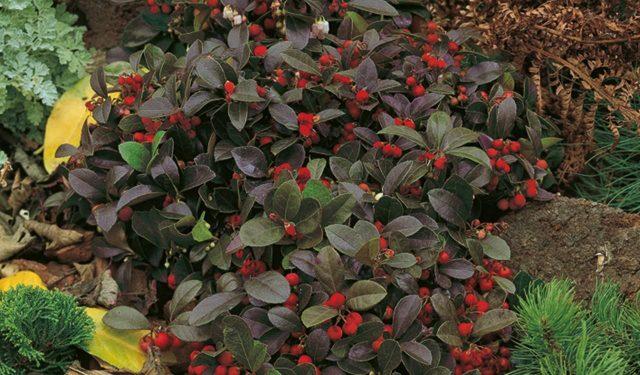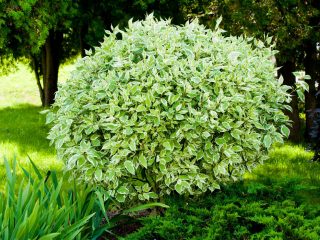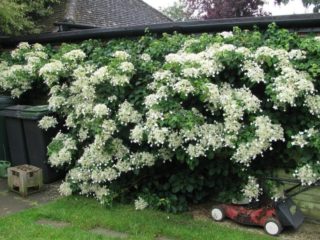Content
Wintergreen (Gaultheria procumbens) is an evergreen shrub belonging to the Ericaceae family. It grows wild in the forests of North America and is cultivated in many countries around the world. The plant is characterized by high frost resistance and compactness. It can be grown in open ground and at home. Valued for its decorativeness and unpretentiousness.

Wintergreen is a slow growing plant.
Description of wintergreen with photo
This is a small shrub, the height of which does not exceed 15 cm. However, the peculiarity of wintergreen is that it grows well in breadth, which allows it to be used as a ground cover. The shoots of the plant are short and densely covered with leaves. The growth diameter of the bush is 40 cm.
The leaves of Wintergreen recumbent are ellipsoidal in shape with a pointed tip and a crenate edge. They have a smooth glossy surface, a rich green hue. The length of the plates reaches 2-5 cm, and the width is about 1-2 cm. As the temperature drops, the leaves acquire a purplish-red hue.If the integrity of the plates is damaged, a characteristic pleasant odor is felt.
The flowers of Wintergreen recumbent are bell-shaped and resemble lilies of the valley in shape. The corolla consists of five petals of a white-pink hue. The flowers of the plant are single, drooping. When opened, they emit a pleasant aroma. The flowering period begins in June and lasts for two weeks.
In September-October, wintergreen ripens fruits with a diameter of 6-9 mm. When ripe, they acquire a red color and are able to stay on the branches until spring.
The root system of the plant is fibrous, superficial. Its depth is 5 cm.

In one place, wintergreen can grow up to 50 years under favorable conditions.
Is it possible to eat wintergreen berries?
The fruits of this evergreen shrub are not poisonous. Their use does not harm human health. However, they do not provide any nutritional value.
Properties and application
Wintergreen is used in landscape designs. The plant is ideal for landscaping semi-shaded areas. It is recommended to be used when creating rock gardens, rockeries, borders, as well as decorating the root circle of tall crops.
Wintergreen goes well with:
- ferns;
- conifers;
- rhododendrons;
- euonymus;
- boxwood;
- decorative barberry.
Wintergreen is used in pharmacology, perfumery, and medicine. Based on the leaves and shoots of the plant, essential oil is prepared by steam distillation from raw materials previously soaked in warm water. This remedy is added to anti-inflammatory and analgesic ointments. They are used for joint and muscle rheumatism, arthritis
The leaves of the culture contain methyl salicylate, which has the ability to remove pigments in cells of plant and animal origin. Therefore, this plant has also found use in microscopy for decolorizing preparations in the process of studying tissues.
Growing wintergreen in open ground
Wintergreen belongs to the category of unpretentious plants. However, for the successful development of the shrub, it is necessary to follow some planting and care rules. Therefore, it is necessary to study them in advance in order to avoid problems later.
Landing Features
For wintergreen, it is recommended to choose shaded areas. Planting can be done in spring and throughout the summer if conditions are favorable. The plant prefers loose, nutritious soil with high acidity at a level of at least 5 pH.
For planting, you need to prepare holes with a depth and a diameter of 30 cm. It is recommended to lay a 10 cm drainage layer at the bottom to prevent constant contact of the roots with moisture even during thaws and rains. The rest of the space needs to be filled with a special soil mixture. It should consist of high-moor peat, pine litter and sand in a ratio of 3:2:1. Such a substrate will have high acidity, which is vital for this plant.
When planting, the seedling should be placed in the center and the roots should be slightly straightened. After this, they need to be sprinkled with earth, carefully fill all the voids in the hole, compact the soil at the base of the wintergreen, and then water it well. After planting, the root collar of the seedling should be 10-15 mm below the ground level.It is recommended to plant shrubs in groups at a distance of 25 cm between plants.

You need to wear gloves when working with the plant.
Rules of care
Wintergreen recumbent tolerates short-term drought well. Therefore, it needs to be watered once every two weeks at the rate of 5 liters of water per plant, to which you need to add 1 tsp. citric acid. During hot periods without precipitation, moisturizing should be done twice as often. It is also recommended to place crushed coniferous bark at the base of the bush to prevent excessive evaporation from the soil.
Also, caring for the crop involves periodic weeding. It must be done carefully so as not to damage the roots.
It is recommended to fertilize wintergreen twice a season. Fertilize for the first time in the spring at the beginning of the growing season. At this time, it is recommended to use nitroammophoska at the rate of 30-50 g per plant. The bush needs to be fertilized a second time in June. At this time, you can use 100 g of superphosphate, 80 g of ammonium sulfate and 50 g of potassium sulfide. Sprinkle fertilizers into the root circle and then incorporate them into moist soil.
Every year in the spring, wintergreen is recommended to be pruned, which improves its decorative effect. Broken and damaged shoots must be removed.
When growing this crop in open ground, it is recommended to cover it for the winter. To do this, in the fall you need to insulate the roots of the plant with a layer of chopped coniferous bark of at least 10 cm. And on top of the wintergreen it is necessary to cover it with spruce branches.
Reproduction methods
This evergreen shrub propagates by seeds, layering and cuttings. Each of these methods has its own characteristics.
For successful germination of wintergreen seeds, stratification is necessary. To do this, they need to be sown in the fall in containers filled with peat and sand in a ratio of 2:1, to a depth of 0.5 cm and watered. After this, the containers must be covered and kept in the refrigerator for three months. At the end of February, containers with seeds should be placed on a well-lit windowsill and kept at +23 °C, as well as a high level of humidity.
Shoots appear after 4-8 weeks. And when the seedlings grow 2-3 true leaves, they need to be planted in separate containers. Plants grown from seeds can be replanted into open ground two years after sowing. It is recommended to do this in summer in favorable weather.
The method of propagation by root cuttings of wintergreen is considered the simplest. To obtain new seedlings, it is enough to loosen the soil around the bush, find its root and separate a shoot with an above-ground shoot from it. After this, the seedling can be immediately transplanted to a permanent place.

No more than two root cuttings can be separated per year
In the case of propagation of wintergreen by cuttings, it is necessary to cut the tops of semi-lignified shoots 7-10 cm long. This should be done in August-September. After this, remove the leaves at the bottom of the cuttings and place them in Heteroauxin solution for a day. After time, the shoots must be planted in a mixture of peat and sand, taken in equal volumes. After this, it is recommended to cover the cuttings with a transparent cap and water them as the substrate dries.
Wintergreen cuttings take root after a month at a temperature of +23 °C. After this, they need to be transferred to separate containers. In winter, young plants should be kept in a cool, bright room, and with the arrival of spring warmth they can be planted in open ground.
To propagate shrubs by layering, it is necessary to bury the shoots of the plant in the ground in the spring and fix them. Throughout the season, soil moisture must be controlled for successful root formation. You can separate the layering next year in the spring.
Diseases and pests
Wintergreen has high natural immunity. However, violation of growing rules weakens the plant. In this case, the shrub may suffer from powdery mildew, gray rot, and black mold. Therefore, it is recommended as a preventative measure to spray wintergreen with a 1% solution of Bordeaux mixture in early spring and late autumn.
Among the pests, aphids and whiteflies cause damage to the crop. In case of damage, the plant has a dejected appearance, its flowers and leaves are deformed.

To destroy pests you need to use Fufanon, Teppeki
Conclusion
Wintergreen recumbent is a plant that can successfully disguise unsightly places on the site. At the same time, the culture is undemanding to care and looks original. However, do not forget that this plant prefers acidic soil and may die if there is lime in the soil. Therefore, you need to carefully choose a place for it and use a suitable substrate for planting. In this case, she will become one of the long-livers of the garden.








